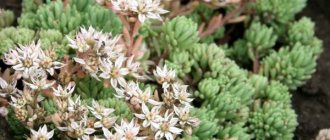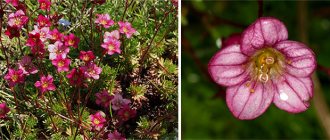It is believed that daffodils are elegant and unpretentious flowers that decorate only garden plots. But that's not true! Narcissists may well be suited to home conditions. You just need to know which plant varieties should be preferred, how to select the correct bulbs and plant flowers in pots, and how to care for them. So, what do you need to know about daffodils growing at home?
Which daffodils should you grow at home?
Daffodils can easily adapt to home living conditions, be in pots and delight the inhabitants of the house with wonderful flowers for a long period from winter to spring. But to do this you need to know what varieties of daffodils can grow at home. The following varieties are chosen more often than other varieties for indoor conditions:
- Papery;
- Little gem;
- Avalanche;
- February Gold;
- Ziva;
- Snowball.
Also, daffodils are grown at home: “Erlichir”, “Verge” or “Geranium”.
The most undemanding in terms of conditions of detention are “Avalanche”, “Paper-shaped”, “Ziva”. They are also characterized by the longest flowering period. Plant flowers can be of different colors: yellow, white, cream, beige. The Avalanche variety, for example, is characterized by the presence of white petals and a yellow core. "Erlichir" stands out for its unique velvety flower structure. Daffodils of different varieties can differ in size from each other.
Reproduction in open ground
As a rule, there are two ways to propagate ornamental plants in open ground: the vegetative method and seeds. In order to create new varieties, breeders use seed propagation, and gardeners resort to the vegetative method.
Propagation by seeds
It will take several years to develop a new variety of daffodils. Crossing bulbs of different varieties must be carried out using artificial pollination. To do this, the flowers are treated with each other's pollen using a brush. After this procedure, they need to put on caps that protect the flower from further dust. Then all that remains is to wait until the seeds are completely ripe.
In spring, seeds must be sown in shallow dies. The containers are placed in a greenhouse with an air temperature of about 18 degrees. After 2 weeks, the air temperature should drop to 12 degrees.
The first year, the resulting seedlings do not need to be planted. In the second year, the seedlings are fixed in a pot. Daffodil seeds will produce bulbs that can be planted in the soil. And only after three years they will give the expected result that you can see.
Vegetative method
There are two options to consider here:
- Reproduction by children from the mother's bulb. At the age of 3 years, the bulb produces babies, the size of which depends on the type of flower. The children are easy to detach, so it is recommended to replant or dig up daffodils only in the third year of life.
- Reproduction by paired scales. Only large narcissus bulbs are suitable for this method. They must be dried for a week at an air temperature of 20 degrees. After this, the bulbs are cleaned of roots and the top layer of scales. The upper part must be cut off by dividing it into 8 parts. The lobules must have paired scales and a common bottom; the mass of each lobule should not be less than one gram. After this, the scales are disinfected with a bandage and placed together with peat in a bag. For 4 months, this biomaterial is stored at a temperature of about 20 degrees. During this period, new daffodil bulbs should form. In the fall, before planting the bulbs, they must be separated from the scales and re-processed. Daffodils must be planted in a die with three parts peat and one part sand. For the winter, the container is placed in a cool place, with a temperature of up to 10 degrees. When the bulb weight reaches 20 g, they can be planted in open ground in the fall.
Selection of bulbs for growing
In order for the plant to quickly and easily adapt to indoor conditions, it is necessary to select large, hard bulbs for planting. They should not have defects: dark spots, scratches, holes, rot. It is better to immediately plant flower bulbs purchased for indoor growing in pots. If you need to store the bulbs somewhere before planting, then choose a ventilated room where it is dry and warm, since in a damp and cool place the bulbs can take root ahead of time or be affected by fungus.
How to plant daffodils in open ground: rules and recommendations
Daffodils will bloom richly and smell fragrant if you carefully choose the location and prepare the beds and the bulbs themselves for planting.
Selecting a location
It is advisable to choose a place for growing daffodils that is well heated by the sun and relatively protected from the wind, although in light partial shade they will grow and bloom well every year
When choosing a site for planting, it is important to remember that low-lying places are not suitable, since due to high humidity the bulbs can easily rot
With tulips
It is beautiful to plant daffodils in a flower bed next to tulips, hyacinths and crocuses. Peonies will also be an interesting neighborhood.
With hyacinths
Some gardeners like to plant early-flowering bulbs under trees.
Preparing the site for planting
It is advisable to prepare the soil and area for autumn planting of any crops in advance. Ideally, it will be loam.
And if you have sandy soil, then a month before planting the bulbs the bed should be dug up 20-25 centimeters (a spade bayonet) and added per 1 square meter. m. 5 kg of peat, rotted compost or humus.
Heavy soil should be made more loose with sand and humus or well-rotted compost.
Daffodils grow well in neutral soils. If your soil is acidic, you can deacidify it using dolomite flour, lime or wood ash.
It would not be superfluous to apply complex fertilizer before digging - per 1 sq. m. 2 tbsp. spoons (30-40 grams) of nitroammophoska.
All bulbs require drainage, unless, of course, you are planting in sandy soil. That is why it is advisable to pour a small layer of sand at the bottom of the planting hole. You must always remember that if the water stagnates, the bulbs will become wet and rot.
Preparing the bulbs
To avoid possible diseases, daffodil bulbs should be treated in one of the solutions before planting. For example, a solution of potassium permanganate or the drug “Maxim Dachnik” is excellent for treating bulbs; “Fitosporin” is also suitable. You need to keep the onions in any product for an average of 20-30 minutes.
Direct landing
Step-by-step instructions for planting daffodils in open ground:
- Decide on a place to plant in the garden.
- Prepare the beds and apply the necessary fertilizers.
- Treat the bulbs to disinfect the planting material and prevent possible diseases.
- Make planting holes. The depth of planting daffodil bulbs depends on their size and soil composition. The classic rule for planting all bulbous plants is that the planting depth should be 3 times the height of the bulb. If the soil is light, then the depth can be increased by 2-3 centimeters; if it is heavy, then reduced by the same amount.
- The distance between the bulbs should be about 15-20 cm.
- If your soil is not light and permeable enough, then add a small layer of sand to the bottom.
- Place the bulbs in the holes (sprouts up), and then lightly press them into the sand and cover them with fertile soil.
- Water moderately.
- Mulch the plantings. Sawdust, peat or the same humus are suitable as mulch. You can also use cones, thereby you will highlight the planting site well.
Video: autumn planting of daffodil bulbs in open ground
Planting a flower indoors
Drainage is placed in the lower part of the pot, which may consist of small pebbles (pebbles), poured 2-3 cm high. Drainage is needed to maximize the movement of oxygen and remove excess moisture after watering the plant. Soil is poured onto the drainage to the top of the pot. The bulbs are planted by slightly pressing them into the ground, with the upper part of the bulb rising above the surface of the ground.
It is quite possible to plant more than one onion in one pot. This is determined by the size of the pot. So, with a container with a diameter of 9 cm, 3 onions of 1 cm in size will fit there. The bulbs should not stick together. Having finished planting, moderately water the soil, avoiding overwatering and rotting.
For better rooting of plant germination, the container with the planted flower is placed in a room with dark and cool conditions for 3 months. There the temperature is maintained within 3-8° C. After this, the planted plant must be placed in the light. Since the “Paper-shaped” daffodil and the “Ziva” variety do not require exposure to the cold, they are placed on the windowsill immediately after planting.
Bulbs are planted in accordance with the expected flowering period. In order to ensure the plant blooms before the winter period, they try to plant it in early autumn. For spring flowering, planting is carried out towards the end of autumn - beginning of winter. In order to more accurately determine the time of planting, you should familiarize yourself with the recommendations for this variety.
Landing Features
Let's learn how to properly plant daffodils indoors.
Selection of bulbs, preparation, timing
In order for the daffodil to take root well and delight you with long-term flowering, choose bulbs that are hard and quite large. There should be no damage, holes, stains, or putrefactive areas on the planting material.
After purchasing the bulbs, it is recommended to plant them in pots as quickly as possible. Ideally, planting material should be purchased immediately before rooting.
There is still a need to store the bulbs before planting; place them in a dark, ventilated and dry place. You should not store it in a room that is too warm and humid, as the bulbs may begin forcing ahead of time. And fungal infection in such conditions is not excluded.
Deadlines
The period for planting daffodils depends on when the owner plans to enjoy the flowering of the plants. If you want flowering to occur traditionally in winter, planting should be done in early September. If flowering is planned for spring, planting is done in November-December. Specific timing depends on the variety.
Process
- Place drainage on the bottom of the selected container - small pebbles, pebbles, expanded clay with a layer of about 3 cm. Fill the container with substrate.
- Place a few onions on top and press them slightly into the soil. The bulbs should look slightly beyond the edge of the pot. Each onion should be planted at a distance from its neighbor - they should not be allowed to stick together.
- Water the soil with water, avoiding flooding.
- Place the pot in a dark room with a temperature of +3-8 degrees for three months to root the bulbs. Note that some varieties do not need a cold period (Ziva, Bumazhny).
- After the three-month period, the pot is transferred to the living room and standard caring procedures begin.
Features of cool forcing
Most varieties require rooting in a place that is cool and deprived of light. In this way, a reliable imitation of open ground is created, where daffodils are genetically trained to grow.
Note that you should not expect normal development of the plant when rooting in an ordinary warm room. Desirable temperature range: +3-9 degrees. During cool forcing, you should take care of the plantings: water a little, mulch with sawdust or leaves.
If you are wondering where to get such a cool place in a standard apartment, we will give you a hint: it could be the vegetable compartment of the refrigerator, a garage or a basement room. If a refrigerator is chosen, the bulbs should germinate separately from stored fruits and vegetables. Ethylene gas, released by the gifts of nature, is harmful to the bulbs.
The cold forcing period lasts three months. By this time, the sprouts have already reached 5-7 cm, and white roots are visible from the holes in the container. After 3-5 weeks, the daffodils bloom.
Advice:
Accustom daffodils to warmth gradually - you shouldn’t transfer them from cold to warm in one step. Increase the temperature step by step to give the plants time to adapt.
Plant care
Caring for daffodils growing at home as potted crops does not require much effort. You just have to take into account some recommendations, and beautiful daffodils will delight your household and all guests, for example, on Women's Day on March 8th. First of all, you should not place the container with the plant on the windowsill close to other flowers. The fact is that daffodils contain substances with toxic properties that can negatively affect the fragile roots of plants that are difficult to care for.
Daffodils must be watered immediately after planting. During rooting of the plant, moderate watering is carried out once every 2 weeks. When the container with the daffodil is in the room on the windowsill, more frequent watering is possible depending on the drying of the soil. When watering, it is better to use non-cold water and pour it into a tray. During the flowering period, water the plant more often, at the end of the period - less often. Stop watering the daffodil when the leaves turn yellow.
For better adaptation to home conditions, which consists in rooting and flowering of the plant, daffodils require feeding with nitrogen-potassium fertilizers. Initially, feeding is done when sprouts form, then when buds appear, once every 2 weeks. During flowering, the plant does not need to be fertilized. It is important to remember that when the flowers appear, the narcissus needs cooler temperature conditions (10-12°C) to increase the flowering period, which will last up to 3 weeks.
Main types and varieties of daffodils
The most favorite and common types of this flower are the following:
- tubular - the length of the middle, the so-called tube, and the petals of the inflorescence are the same, sometimes the tube is longer than the petals;
- large-crowned - a characteristic feature is that the length of the crown of the inflorescence is approximately half the length of the petal;
- small-crowned - the length of the crown is only a few millimeters;
- split-crowned - the middle of the flower comes in different sizes and lengths, the main feature is that the crown looks torn or fringed. Very spectacular and beautiful inflorescences;
- terry varieties. Also beautiful and unusual plants with large flowers. Some double varieties have very large inflorescences and the stem does not support such a large and heavy flower, so a special support is placed for them;
- cyclamenoid - the shape of the inflorescence resembles cyclamen. The middle of this variety is long and thin. Early variety of daffodils;
- Jonquils are a late variety that has several small inflorescences on the stem.
Caring for daffodils after the flowering period
Plants require some care after flowering time. Dried flowers are cut off. The other parts of the daffodils are allowed to dry completely. For 10 days, the plant is watered moderately and fertilized. When the narcissus leaves completely wither, they are carefully removed with a knife (scissors). The container with the plant bulbs in it is taken to a room with a cooler climate.
The bulbs can also be placed in a small cloth bag or paper package, freeing them from the soil; place it somewhere cool and dark, for example in the refrigerator. Daffodil bulbs affected by rot or other disease are thrown away. At home, flowers from the same bulb are grown no more than 3 times. It should be taken into account that every year with such forcing, flowering will not be so abundant every year, and the size of the flowers will decrease. Typically, such bulbs are transferred to garden plots at the beginning of summer.
Preparing the soil for planting daffodils
Daffodils can grow in a variety of soil types, but the most suitable are loamy soils with an acidity of 6.5-7.0. On sandy soils, poor in macro- and microelements, daffodils will bloom for the first time due to previously accumulated nutrients, then the bulbs become smaller and flowering stops. Sandy soils cool quickly and bulbs are more susceptible to freezing. If your garden has been around for a long time, the soil is sufficiently cultivated and suitable for growing garden flowers, soil preparation will be minimal.
In newly developed areas, it is necessary to remove stones, construction debris, and tree roots. In heavy clay soils you need to add sand (20 kg per sq. m.), in sandy soils you need to add clay and humus. Organic fertilizers (rotted manure, humus, compost) are applied in advance, at least three months before planting, humus at the rate of 15 kg/m2, rotted manure - 20 kg/m2, while digging the soil to a depth of 25-35 cm. Fresh manure is applied at least a year before planting under previous crops, immediately before planting, applying fresh manure under daffodils is strictly prohibited!
For good growth and development, daffodils need a balanced mineral diet. The effect of applied fertilizers does not appear immediately; planted bulbs in the first year live off the nutrients accumulated over the previous season. Therefore, the use of fertilizers does not bring immediate results. However, daffodils do need macro- and micronutrients.
If possible, you need to do a soil analysis for acidity and the content of basic elements (nitrogen, phosphorus, potassium). Most of all, daffodils need phosphorus and potassium in the soil. Potassium is used by the plant to produce starch and sugar. Root growth is mainly stimulated by the presence of phosphorus, which is also responsible for flowering. Nitrogen is the main tissue-forming element, but its excessive amount is dangerous for the plant. If there is an excess of it, the leaf mass grows very quickly, the plant becomes weakened and is easily susceptible to diseases. Therefore, to improve soil fertility, mineral fertilizers are applied based on the results of a soil analysis. Only average rates of pre-planting fertilizer can be given: simple superphosphate - 60 g/m2, potassium sulfate - 30 g/m2, ammonium nitrate (during planting) - 10-15 g/m2.
If you plan to plant daffodils in a small area, there is no need to dig up and cultivate a large area. You can remove the top layer of soil and replace it with specially formulated soil, prepared yourself or purchased in a store.
What do indoor daffodils suffer from?
Most often, home daffodils suffer from fungal infections. This happens if you overwater the plant or store the planting bulbs in a very warm place in the room. To prevent such a disease, they are treated with fungicidal preparations before planting. Also, mites, bulbous types of flies, and tiny worms - nematodes can become pests of the normal development of narcissus.
In order to avoid the action of pests, the soil in the container with the plant is loosened, dry and limp leaves are removed, and treated with insecticides. In addition to the listed measures to prevent narcissus diseases, you need to follow the main rules for caring for the plant:
- watering should not be very large;
- Planting materials (bulbs) should not be stored at temperatures exceeding 10°C.
So, it is quite possible to grow daffodils at home. Forcing plants does not require special care, time or money. You just need to follow some rules when planting and caring, and beautiful daffodils will decorate your apartment and become a wonderful hand-grown gift.
Pest and disease control
Despite their status as a crop that grows almost without intervention, daffodils are quite often affected by pests and diseases. Root mites, nematodes, and onion hoverflies often appear on them; At the first signs of damage, insecticides should be used and in the future, every spring, before the buds appear, preventive treatments should be carried out.
Among the diseases, daffodils suffer from various types of rot, mosaic, fusarium and sclerotinia. These diseases are fought with copper-containing fungicides (for example, copper sulfate diluted with water at a concentration of 100 g per 1 bucket).
Difficulties in care
With excessive dampness and excessive watering, zephyranthes is susceptible to root rot. One of the signs of rotting bulbs is that the leaves turn yellow and dry out. In this case, you need to renew the soil, remove infected parts of the plant and treat with a fungicide.
Parasites appear on zephyranthes extremely rarely. Only occasionally can scale insects, spider mites or whiteflies be found. Treatment with an insecticide will get rid of pests much faster than folk remedies.
Sometimes flower growers are faced with the fact that zephyranthes does not bloom. The reason may lie in the wrong selection of pot. If it is too large and deep, the plant will actively build up its root mass, and there will be no energy left for flowering.
Types of indoor lilies
Among the 40 species of marshmallows that can be found in the natural environment, no more than 10-12 are grown in culture. The most common are the white-flowered zephyranthes.
- Zephyranthes Atamas is a herbaceous perennial with a small (up to 2 cm in diameter) bulb and a shortened neck. The leaf rosette consists of 6-8 tubular leaves 15-20 cm long. White flowers with a yellow center are 2.5-4 cm in diameter. Blooms in early spring, prefers cool rooms.
Enemies of narcissists
If you follow all the rules for planting and growing these flowers, you will be able to avoid trouble. But there are times when flowers begin to hurt, regardless of how well they are cared for. Mostly daffodils suffer from fungal diseases. Fusarium is considered a big problem, which first affects the bottom of the bulb, and then gradually rises upward, capturing more and more new parts of the plant. This fungus makes the bulb soft and covers it with a pink-white coating. After a short time, the leaves are affected: yellowness appears, turning into a brown tint. Then the leaves dry.
Another enemy of daffodils is gray rot (botrytis). It also affects the bulbs with a gray coating with black dots. The leaves become covered with pale brown spots, and the stems and flower buds begin to rot.
There is one more disease that needs to be dealt with. This is penicillosis or penicillium rot. The presence of such a disease leads to the fact that the bulbs do not germinate in the spring. This rot forms when the soil is very moist.
To avoid all diseases, the bulbs should be immersed in Maxim solution for 30 minutes before planting. After the first shoots appear, they must be sprayed with 1.5 percent Bordeaux mixture.
Daffodils are also afraid of viral diseases, such as white and yellow stripes, mosaic virus, ring spot and others. The disease progresses almost identically: stains and spots of different colors appear, the bulbs become underdeveloped, and therefore the development of the plant slows down. Daffodils can become infected in different ways: with the help of gardening tools, infected seeds, pollen, insects. This cannot be completely prevented, so it is worth taking measures to prevent illness. This will be facilitated by healthy large bulbs that have previously undergone pre-planting preparation.
We must constantly fight against insects that carry the virus. These include mites, nematodes, whiteflies, beetles, and cicadas. If infected plants are identified, they must be removed immediately to avoid the spread of infection to healthy specimens. Frequent carriers of viruses are daffodil flies, slugs, mole crickets, and root mites. To prevent these insects from causing significant harm to the plants, it is necessary to place the bulbs in hot water (44 degrees) for a couple of hours before planting. If infection occurs, it is worth using the drugs carbathion and nemaphos. The narcissus fly is defeated by fufanon (2% solution). When the first buds appear, it is advisable to treat the plant with phytoverm, adding 2 ml of solution to 1 liter of water.
Do I need to cover daffodils for the winter?
Daffodils are considered rather unpretentious plants that do not require shelter for the winter. However, sometimes it is advisable to take care of shelter . Firstly, if the daffodils were planted after September 15 (if planted late, the plant does not have time to take root properly and dies in the event of a cold and little snow winter. It is also recommended to cover large-flowered varieties of daffodils (tacetata, triandrus, cyclamen and jonquillium), which are more vulnerable to frosts For shelter use a layer of dry leaves about 15 cm thick.
Pruning daffodils
The plant does not undergo formative pruning. Moreover, they try to preserve the green mass of the plant for as long as possible - until it completely dries out naturally. For forced plants and open ground plants, the peduncles are trimmed to obtain bouquet material.
Trimming method
Narcissus has leafless peduncles, so the removal of a flower during growth is well tolerated - the plant does not waste energy on setting and ripening fruits, the work of the entire vegetative mass is redirected to creating reserves in the bulb.
Peduncles have long been broken off rather than cut. It is believed that this reduces the possibility of transferring viruses from plant to plant. At the base of the bulb, the peduncle is easily separated without the help of a knife.
Daffodils for a bouquet are collected in the morning or evening, in the phase of a colored bud or in half-opening. If transportation and storage are to be carried out, the flowers are immediately wrapped in paper and sent to a very cool place - the lower the positive temperature, and the less its fluctuations, the longer the plant will remain in suspended animation, without loss of quality for further flowering.
Transfer
It is recommended to replant zephyranthes every 2-3 years, although some gardeners advise doing this every spring. The pot of marshmallows should be wide and not too deep. You can use rectangular flowerpots for the entire windowsill or several small containers. Some gardeners like to combine plants with different petal colors in one pot.
Zephyranthes needs a good drainage system because it does not tolerate stagnant water. The soil should be nutritious and light, with neutral or weak acidity. To prepare the soil mixture use:
- sand;
- leaf humus;
- turf soil.
When replanting, they try to remove most of the old earthen clod. After the procedure, reduce watering for several days and try not to move the pot.











